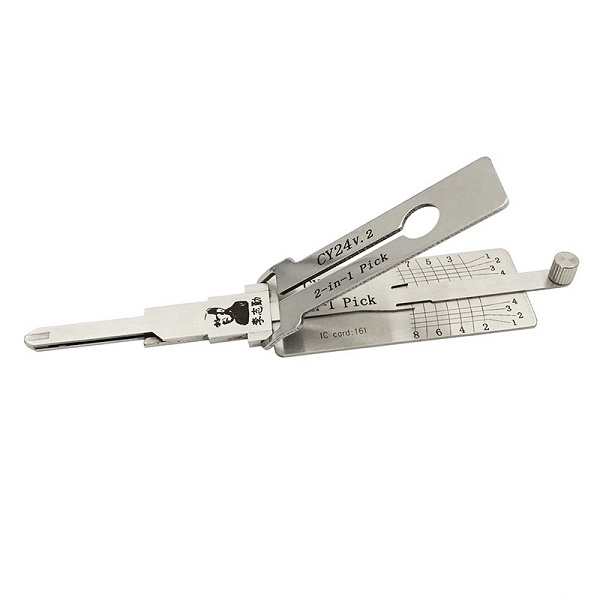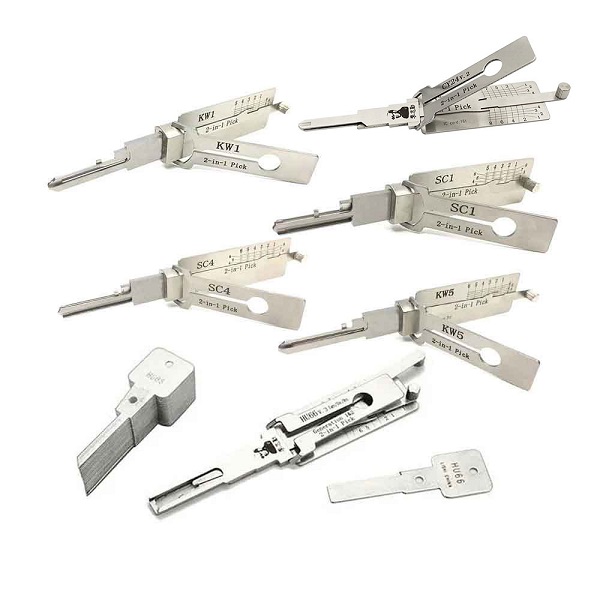Lishi Lock Pick Guide: How to Decode a Lock Cylinder with Lishi Tools
2025-09-09 09:01
Lock decoding represents a significant advancement in the field of locksmithing, offering a non-destructive and precise method to understand and open locking mechanisms. Among the various tools available, Lishi tools have set a new standard due to their innovative design and effectiveness. For professionals and enthusiasts looking to enhance their skillset, the decision to Buy Lishi Lock Pick Tools is often the first step toward mastering this efficient technique.

What are Lishi Tools and How Do They Work for Decoding?
Lishi tools are lock picking and decoding tools from China. They can open a lock and, at the same time, read the pin depths inside. This lets locksmiths figure out the key cuts and make a replacement key without needing the original.The tool looks simple but is precise. It has a pick blade that fits a specific keyway and a built-in tension bar. A small scale and pointer show the exact depth of each pin as the user moves it. By reading and recording these depths, the user can determine the exact key code for the lock.
What is the Step-by-Step Process to Decode a Lock Cylinder?
Step 1: Select the Correct Lishi Tool for the Keyway
The first and most important step is picking the right Lishi tool for the lock. A tool for one keyway won’t work on another. The pick must match the keyway perfectly for smooth use. Check the lock brand and keyway before starting.
Step 2: Apply Light Tension and Insert the Tool
Insert the Lishi tool fully into the keyway and apply light torque as if turning a key. This slight tension binds the pins just enough for picking and decoding. Too much force will lock the pins, too little won’t let you read them accurately.
Step 3: Locate and Test Each Pin Tumbler Individually
Start at the first or last pin, depending on the tool. Gently press the pick on each pin until you feel a click or resistance change. The tool will measure the pin’s position and show its depth on the scale or readout.

Step 4: Read and Record the Depth Value for Each Pin
When a pin reaches the shear line, note its depth on the tool’s scale without releasing tension. Write down the number and pin position. Repeat for each pin in order to get the full key code.
Step 5: Decode the Sequence into a Key Code
Once all pin depths are recorded, you have the full key code. Use this code to cut a new key, which should open the lock smoothly, confirming your decoding was accurate.
What are Common Challenges and Pro Tips for Successful Decoding?
A common challenge is working with old, dirty, or poorly lubricated locks, which can make pins stick or give false feedback, making accurate readings difficult. Applying wrong tension is another issue. Too much torque locks the pins, while too little prevents a clear shear line, causing inconsistent readings. Beginners may also have trouble reading the scale if the pointer bounces or falls between numbers, leading to uncertainty in the key code.
To overcome these challenges, follow some key tips. First, use a dry Teflon-based lubricant to free stuck pins without attracting dirt. Second, apply light tension, just enough to hold a piece of paper against a wall, and practice on a lock to develop the feel. Third, trust the tactile click over the first visual reading. If a depth seems unclear, release and reapply tension to take a second reading. For worn locks, decode the cylinder two or three times to confirm the code before cutting a key.
Using Lishi tools turns locksmithing into a precise skill. It requires patience and care, but lets you open locks and make new keys without damage. Although they cost more than traditional picks, they are faster and more professional. For those seeking to build a comprehensive locksmithing toolkit without overspending, it is wise to research and find a Cheap Lishi Lock Pick supplier that offers genuine products, ensuring you have the right tools to tackle any decoding challenge effectively and reliably.

 Like Us on Facebook to enjoy 5% discount
Like Us on Facebook to enjoy 5% discount